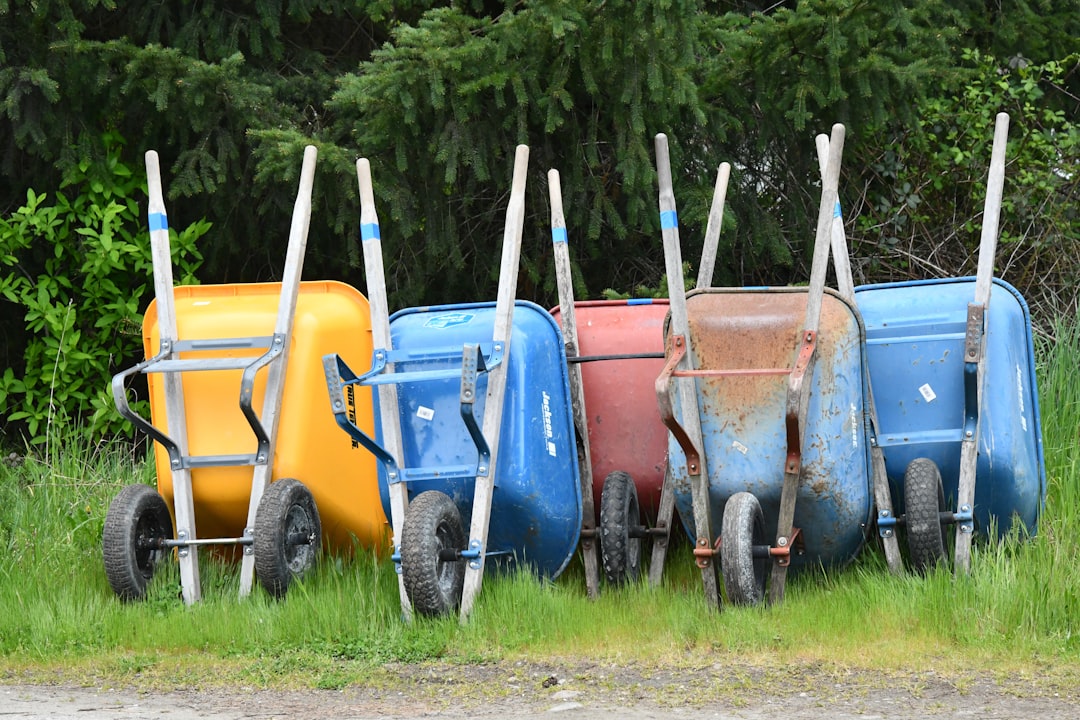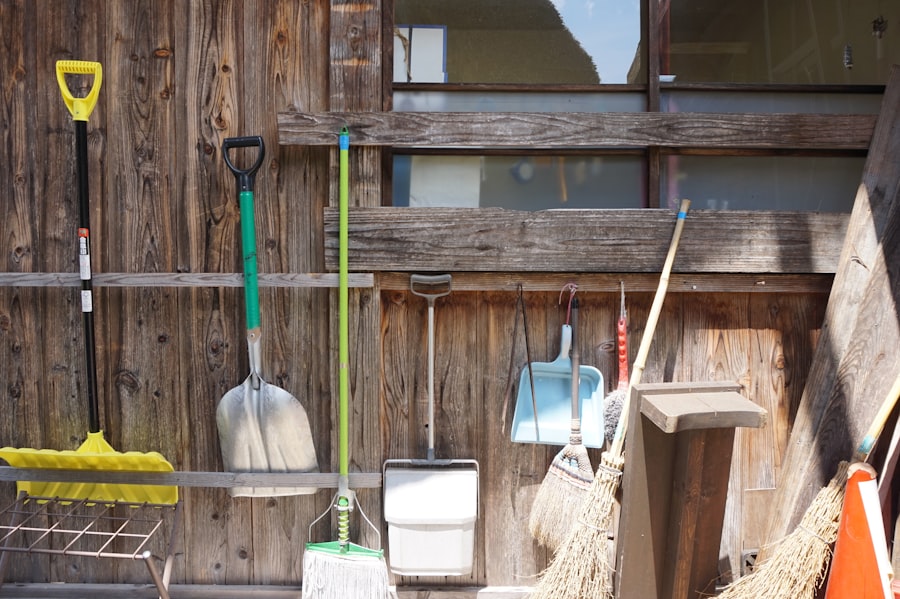Creating Raised Beds: A How-To Guide

Raised beds are a popular gardening technique that involves creating a garden bed that is elevated above the ground level. These beds are typically constructed using a frame made of wood, stone, or other materials, and are filled with soil. Raised beds offer numerous benefits for gardeners, making them a popular choice for both beginners and experienced gardeners alike.
One of the main benefits of raised beds is improved drainage. Because the soil in raised beds is elevated above ground level, excess water can easily drain away, preventing waterlogged soil and root rot. This is especially beneficial for areas with heavy clay soil or poor drainage. Additionally, raised beds provide better control over the soil quality. Gardeners can choose the type of soil they want to use, ensuring optimal conditions for their plants.
There are several types of raised beds to choose from, depending on your preferences and needs. The most common type is the traditional wooden raised bed, which can be built using various types of wood such as cedar or pine. Another option is the stone or brick raised bed, which offers a more decorative look and can be built using stones or bricks of your choice. Additionally, there are also prefabricated raised bed kits available in the market, which are easy to assemble and require minimal construction skills.
Choosing the Right Location for Your Raised Bed
When choosing a location for your raised bed, there are several factors to consider. First and foremost, you need to ensure that the location receives adequate sunlight for your plants. Most vegetables and flowers require at least six hours of direct sunlight per day to thrive. Therefore, it is important to choose a location that is not shaded by trees or buildings.
In addition to sunlight requirements, you also need to consider the soil quality and drainage in the chosen location. It is important to avoid areas with compacted soil or poor drainage, as this can lead to waterlogged soil and root rot. If the soil in your chosen location is not ideal, you can improve it by adding organic matter such as compost or well-rotted manure.
Materials Needed for Building a Raised Bed
There are several materials that can be used for building raised beds, each with its own pros and cons. The most common material is wood, which is readily available and easy to work with. Cedar is a popular choice for wooden raised beds, as it is naturally resistant to rot and insect damage. However, other types of wood such as pine or redwood can also be used.
Another option for building raised beds is using stone or brick. Stone or brick raised beds offer a more decorative look and can add visual interest to your garden. However, they can be more expensive and time-consuming to construct compared to wooden raised beds.
In addition to the materials for the frame, you will also need some basic tools for building a raised bed. These include a saw, drill, screws or nails, and a level. Depending on the type of material you choose, you may also need additional tools such as a chisel or masonry saw for working with stone or brick.
Step-by-Step Guide to Building a Raised Bed
| Step | Description |
|---|---|
| 1 | Choose a location for your raised bed |
| 2 | Measure and mark the area for your raised bed |
| 3 | Clear the area of any grass or weeds |
| 4 | Build the frame of your raised bed using wood or other materials |
| 5 | Fill the raised bed with soil and compost |
| 6 | Plant your desired plants or vegetables |
| 7 | Water and maintain your raised bed regularly |
Building a raised bed is a relatively simple process that can be done in just a few hours. The first step is to plan and measure the area where you want to build the bed. Consider the size and shape of the bed, as well as any existing structures or plants that may be in the way.
Once you have planned the layout, you can start building the frame. If you are using wood, cut the boards to the desired length and attach them together using screws or nails. Make sure the corners are square and use a level to ensure that the frame is straight.
After the frame is built, you can fill the bed with soil. It is recommended to use a mixture of topsoil, compost, and other organic matter to create a nutrient-rich growing medium. Fill the bed with soil, leaving a few inches of space at the top to allow for watering.
Soil Preparation for Raised Beds
Soil preparation is an important step in raised bed gardening, as it helps create the optimal growing conditions for your plants. Start by removing any weeds or grass from the area where you will be placing the raised bed. This can be done by hand or using a garden hoe or shovel.
Next, you need to choose the type of soil to use in your raised bed. It is recommended to use a mixture of topsoil, compost, and other organic matter to create a nutrient-rich growing medium. This will provide the necessary nutrients for your plants to thrive.
In addition to adding compost, you may also need to add other amendments to improve the soil quality. This can include materials such as perlite or vermiculite to improve drainage, or lime or sulfur to adjust the pH level of the soil.
Planting in Raised Beds: Tips and Tricks

When it comes to planting in raised beds, there are several tips and tricks that can help you maximize your yields. One important consideration is choosing the right plants for your raised beds. Some plants are better suited for raised bed gardening than others. For example, vegetables such as tomatoes, peppers, and lettuce are well-suited for raised beds due to their shallow root systems.
Spacing and arrangement of plants is another important factor to consider. It is important to give each plant enough space to grow and spread out. Overcrowding can lead to poor air circulation and increased risk of disease. Additionally, consider companion planting, which involves planting certain plants together that benefit each other in some way. For example, planting marigolds alongside tomatoes can help repel pests.
Irrigation and Watering for Raised Beds
Proper irrigation and watering are crucial for the success of your raised bed garden. Raised beds tend to dry out more quickly than traditional gardens, so it is important to provide adequate water to your plants.
There are several types of irrigation systems that can be used for raised beds. One option is drip irrigation, which involves placing a series of small tubes or hoses along the length of the bed. This allows water to be delivered directly to the roots of the plants, minimizing water waste.
Another option is soaker hoses, which are porous hoses that release water slowly and evenly along their length. This can be a cost-effective and efficient way to water your raised beds.
Regardless of the irrigation system you choose, it is important to water your raised beds consistently and deeply. This means watering until the soil is moist several inches below the surface. Avoid shallow watering, as this can lead to shallow root growth and increased susceptibility to drought.
Maintenance and Care of Raised Beds
Regular maintenance is important for keeping your raised beds healthy and productive. Some regular maintenance tasks include weeding, pruning, and fertilizing.
Weeding is an important task in raised bed gardening, as weeds can compete with your plants for nutrients and water. Regularly check your raised beds for any weeds and remove them promptly.
Pruning is another important task, especially for plants that tend to grow tall or vine-like. Pruning helps promote air circulation and prevents overcrowding, which can lead to disease.
Fertilizing is also important for maintaining healthy plants in raised beds. Organic fertilizers such as compost or well-rotted manure can be added periodically to provide a slow-release source of nutrients.
Common Problems and Solutions for Raised Beds
While raised beds offer numerous benefits, they are not without their challenges. Some common problems that gardeners may encounter include pests, diseases, and nutrient deficiencies.
Pests such as aphids, slugs, and snails can be a nuisance in raised beds. There are several organic pest control methods that can be used, such as handpicking, using insecticidal soap, or attracting beneficial insects.
Diseases such as powdery mildew or fungal infections can also affect plants in raised beds. Proper spacing, good air circulation, and regular inspection can help prevent the spread of diseases. Additionally, removing infected plants promptly can help prevent the spread of disease.
Nutrient deficiencies can occur in raised beds if the soil is not properly amended. Regularly adding compost or other organic matter can help replenish nutrients in the soil. Additionally, periodic soil testing can help identify any nutrient deficiencies and allow you to make the necessary adjustments.
Enjoying the Fruits of Your Labor in Raised Beds
In conclusion, raised beds offer numerous benefits for gardeners and are a popular choice for both beginners and experienced gardeners alike. They provide improved drainage, better control over soil quality, and easier access for planting and maintenance.
By choosing the right location, materials, and soil for your raised bed, you can create optimal growing conditions for your plants. Proper irrigation, maintenance, and care are also important for keeping your raised beds healthy and productive.
While there may be some challenges along the way, such as pests or diseases, with proper planning and care, you can enjoy the fruits of your labor in your raised bed garden. So why not give raised bed gardening a try and see the benefits for yourself? Happy gardening!



